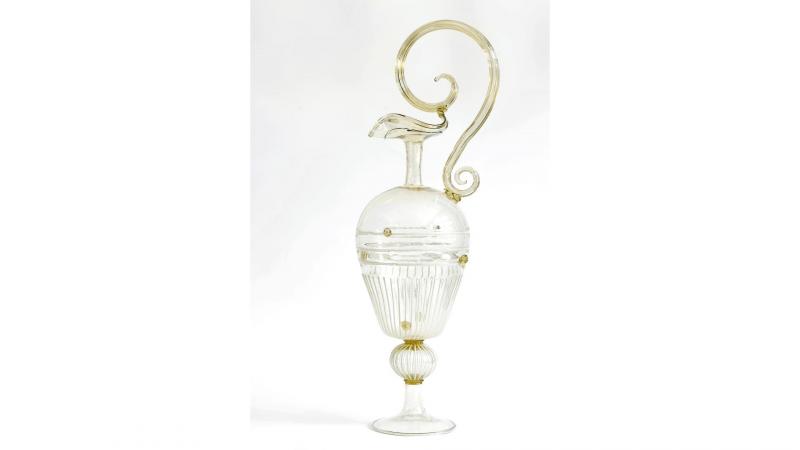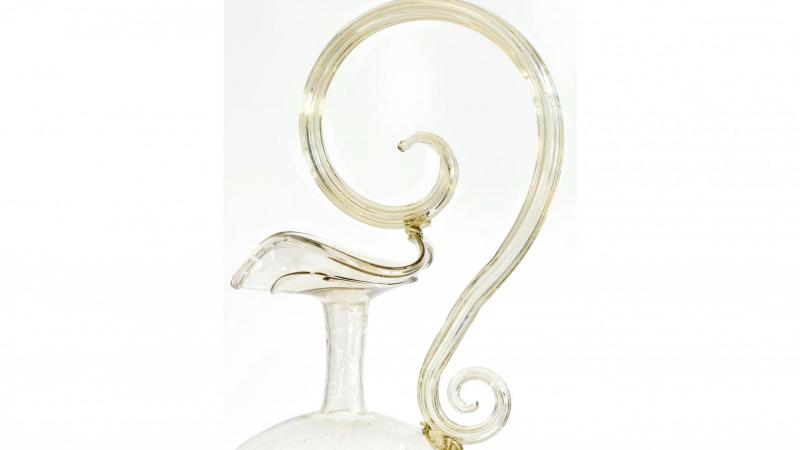Work classified as Treasury of the Wallonia-Brussels Federation
This exceptional ewer is one of the most beautiful glasses in the collection[1]. Made in Spain during the Renaissance, it is a Venetian-style creation, a unique example without any comparative piece.
The cylindrical part of the body is soberly decorated with three filigree circular fillets and four gilded masks, three of which are in the shape of rosettes and one stamped with a demon's head with horns and mustaches. The inverted tapered part is adorned with forty-one vertical white threads and two pastillages of raspberries, originally gilded. A flattened blown ball, in the continuity of the decoration of the body, is embellished with twenty-one vertical white lines. The round foot extends into a cylindrical leg in stylistic agreement with the stretched collar. The mouth is trilobed and surmounted by a majestic handle in a double spiral, decorated with twelve ribs.
The lightness and yellowish color of the glass, the association of the foot and the blown button, the vertical white filigrees standing out in relief rather than their inclusion in the glass are found on pieces made in Catalonia as well as the profile of the cove.
Usually, the ewer is intended to contain and pour water, either to fill the glasses of the guests during the meal, or to wash their hands above a matching basin. However, given its elegance, harmonious proportions, fragility and height, it is a decorative piece. It is representative of the heyday of Catalan glass and was probably the pride of its owner, who came from a royal or princely family.
Find out more about the Treasures of the Wallonia-Brussels Federation
The decree of July 11, 2002 makes it possible to classify as Treasure, the goods which present a notable interest for the Wallonia-Brussels Federation. In this context, several works whose artistic quality, rarity or links with history and the history of art no longer need to be demonstrated, are further enhanced thanks to this classification. This recognition makes it possible to highlight these jewels of our artistic and cultural heritage but above all to better protect them, to help with their restoration or to prevent them from being sold abroad. Several major historical works are each year recognized as Treasures.
A protected good obtains the quality of “treasure”. This term finds its origin in European law which offers each Member State the possibility of protecting its “national treasures having an artistic, historical or archaeological value”. These treasures therefore escape the principle of free movement of goods within the European Union and may be subject to restrictions or bans on leaving the national territory concerned.
More information on the website of the Wallonia-Brussels Federation.
[1] Former Baar collection. Acquisition at Stora in Paris, December 1937 (former Robert de Rothschild collection).

